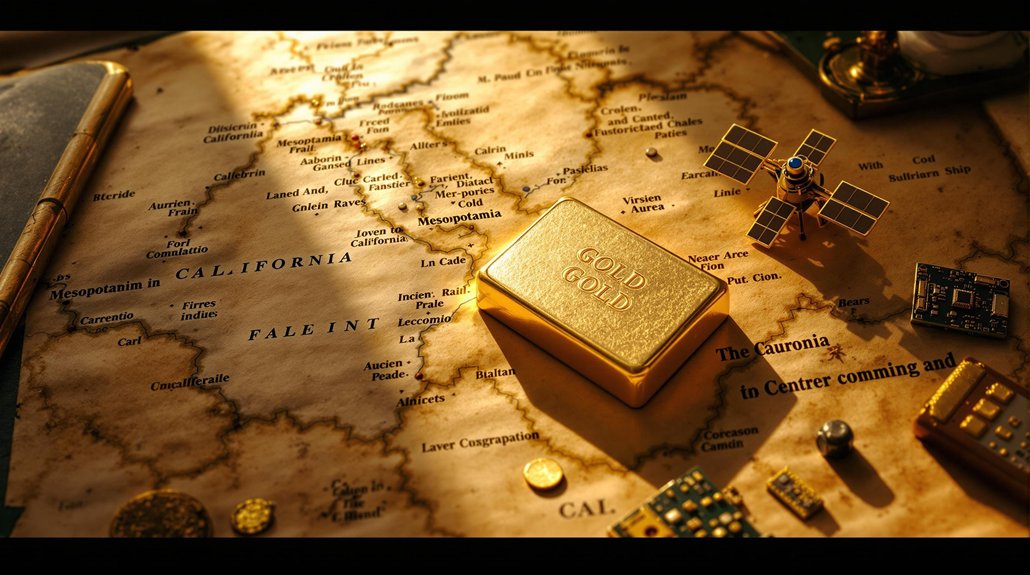Gold’s journey through history spans thousands of years. First used in Mesopotamia around 3000 BCE, this precious metal has shaped economies and driven exploration worldwide. It’s passed through countless hands, from ancient jewelers to modern scientists. Each ounce carries stories of wealth, status, and innovation across civilizations. While some see it as merely a shiny substance, others recognize it as a witness to humanity’s greatest achievements and darkest hours. What tales might your gold items tell?
Few materials on Earth have captivated humanity like gold. Since its earliest known use in Mesopotamia around 3000 BCE, this precious metal has shaped civilizations and driven human ambition. Ancient people recognized gold’s unique properties and value, leading to its use in currency, jewelry, and religious artifacts across the globe.
The Romans solidified gold’s economic importance by issuing the Aureus coin in 50 BCE. Later, in medieval Europe, gold coins like Venice’s Ducat, introduced in 1284, circulated for over 500 years. These currencies weren’t just money—they represented power and sovereignty. When Britain reestablished a metallic currency standard after the Norman conquest in 1066, it marked another chapter in gold’s monetary dominance.
Gold coins embodied not just economic value, but the very power and authority of the civilizations that minted them.
Gold’s allure has driven exploration and conquest throughout history. Marco Polo’s tales of “almost unlimited” gold in the Far East fueled European imagination. In 1511, King Ferdinand of Spain directly ordered explorers to prioritize acquiring gold in the New World. This quest led to the extraction of vast treasures from Aztec and Inca civilizations.
The California Gold Rush of 1848 transformed America’s western territories. When gold was discovered along the American River, people from around the world flocked to places like Sacramento, creating economic booms and permanent settlements virtually overnight. James Marshall’s discovery at Sutter’s sawmill on January 24, 1848, sparked this transformative period in American history.
Over time, gold became the foundation of international economics. Great Britain’s introduction of gold-backed currency in 1377 established monetary stability that would eventually evolve into the Gold Standard. Though modern economies have moved beyond this system, gold remains valuable, reaching $870 per ounce in 1980.
Today, gold isn’t just for investment or jewelry. About 10% of gold consumption goes to industrial uses. Its excellent conductivity makes it essential for electronics, while medical applications include implants and diagnostic equipment. The ancient Egyptians were among the first to perfect goldworking techniques, creating intricate designs using the filigree technique around 2500 BCE.
Even space exploration depends on gold’s reflective and non-corrosive properties for satellites and spacecraft.
From ancient temples to modern technology, gold’s journey continues, connecting our past to our future.









